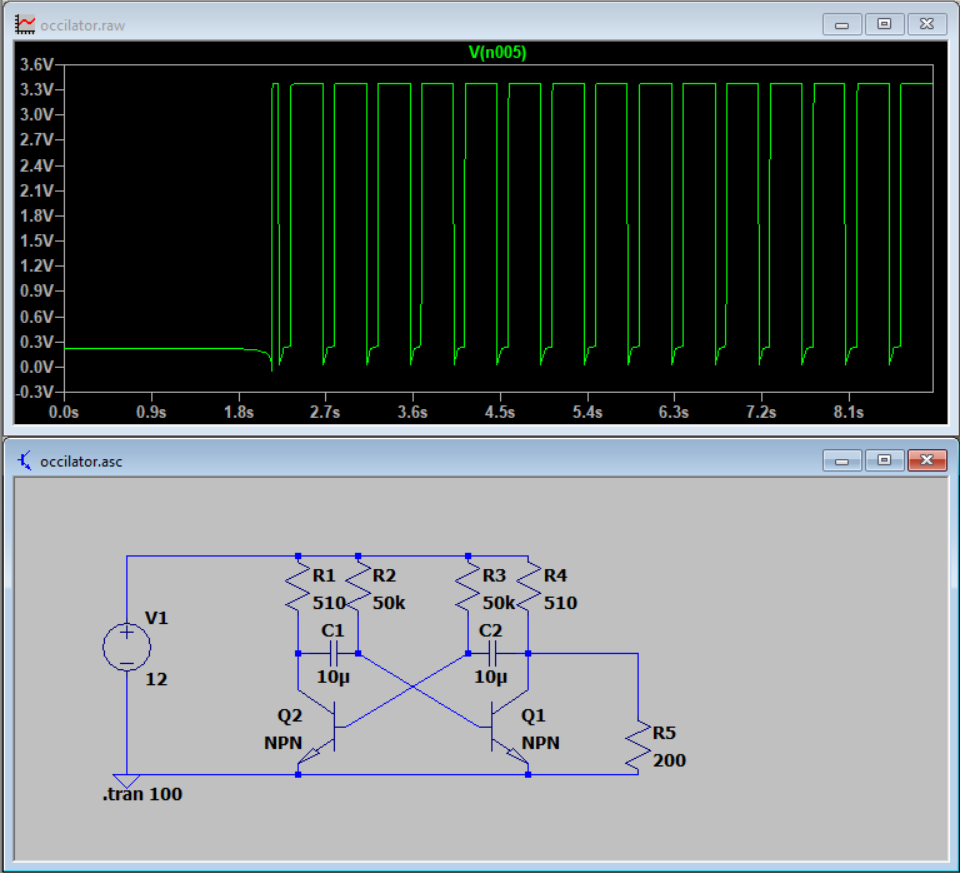Yes hi so basically i'm wondering how to make the output oscillate between 0 and n volts, because in every one of these that i've made it never goes to 0 and that's a slight issue as im using it to feed into a linear mode mosfet where i need it to switch on and off instead of partially off. I don't know if there's some AC coupling thing that we can use here but i've never made that work with an astable multivibrator or if the resultant negative voltage would be good or bad for the mosfet turning on and off. Also ideally i need the oscillator to go between 0-10 volts where 10v is minimum high voltage in order to turn the mosfet fully on. Maybe i'm being too picky at this point but if anyone knows how to do all of that i thought it couln't hurt to ask
tldr: need voltage between 0-~12, dont know how to make 0V and assuming low voltage in chart is because of resistor.




